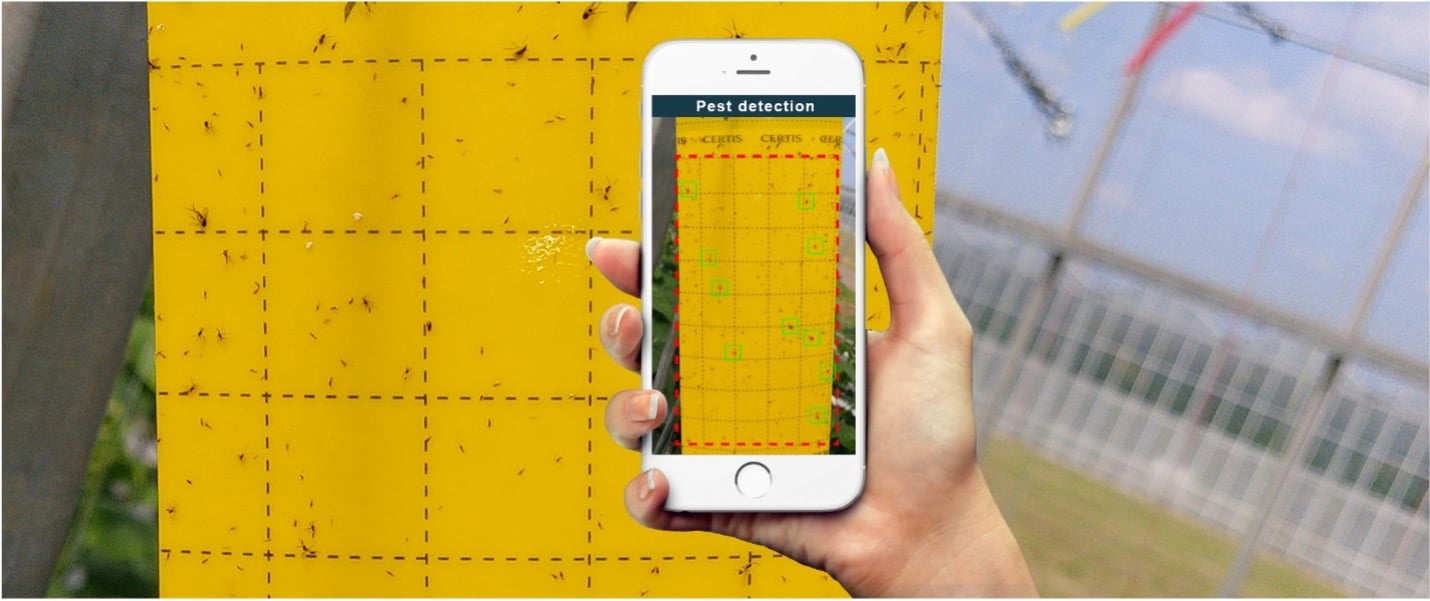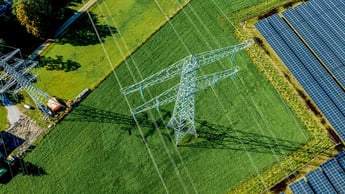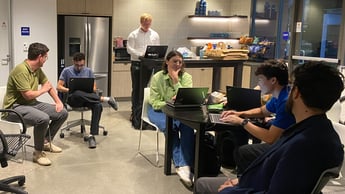Software solution built with Mendix and Android NDK binds Big Tech systems to pest control, supported by responsible AI
Pests are the greatest threat to any grower, capable of destroying entire crops if left unchecked. To protect their plants, growers can use various crop protection products, each tailored to specific types of pests. To minimize the use of chemicals or expensive natural pest killers, however, growers rely on glue traps to monitor and identify pest types over time. This process requires hours of walking through greenhouses, closely inspecting glue traps, and meticulously counting and recording each type of pest they find.
To help a vegetable grower automate pest detection and minimize the use of protection products, we built a software solution powered by responsible AI.

Training the AI model together
Naturally, projects are more successful when people cooperate closely, sharing knowledge and working together. For this project, we cooperated with experts running a greenhouse. Together we bridged the gap between Big Tech systems and business value, using domain knowledge to design a user-friendly solution supported by AI.
To gather domain knowledge and train the AI model, our first step was to gather images of glue traps and ask experts to categorize each insect on them. We stored the images in Blob storage, included metadata such as GEO location and timestamp, and set up an SQL database with the labeled images. Subsequently we trained the model on this labeled data.
Once the model was trained, we developed a mobile app that allows greenhouse scouts to capture images with a smartphone and send them directly to our Azure Cloud Factory to be processed and labeled by the model.
Over the course of several weeks, the team used this app to consistently photograph glue traps and improve the model. In just a few months, we managed to reach >93% accuracy.
Big Tech, leveraged by a friendly user-interface
A friendly user-interface makes all the difference when using technology. Therefore, we built two front-end applications: a mobile app to capture and process pictures of glue traps, and a low-code web app for overview and insights.
For the mobile app, we used Android NDK as this allowed us to use the camera sensor directly, circumventing the camera software. This guarantees raw images without filters.
For the web app we used Mendix as it provides customizable building blocks that enable responsiveness and data model integration out of the box, and the ability to develop new features rapidly. The web app gives access to a gallery, a dashboard, and an interactive heatmap of the greenhouse. The gallery allows users to review the labeled images. This interaction between the expert and the app guarantees continuous training of the model. The dashboard and heatmap allow users to compare different areas of the greenhouse.
Pest control in the palm of your hand
Though the application of Big Tech systems can be complex, close cooperation and a well-designed user interface guarantee the transparency needed to really trust an AI solution. A clear dashboard provides continuous insight into areas that need attention, and into the effect of measures taken. This feedback loop guarantees a symbiotic cooperation between man and responsible AI, in which technology assists our customer to innovate toward sustainable food production.





